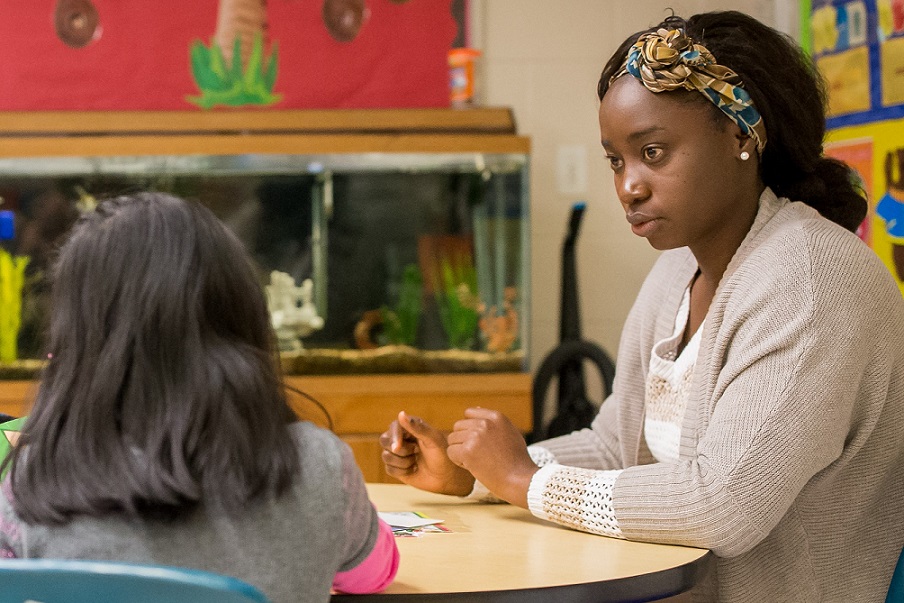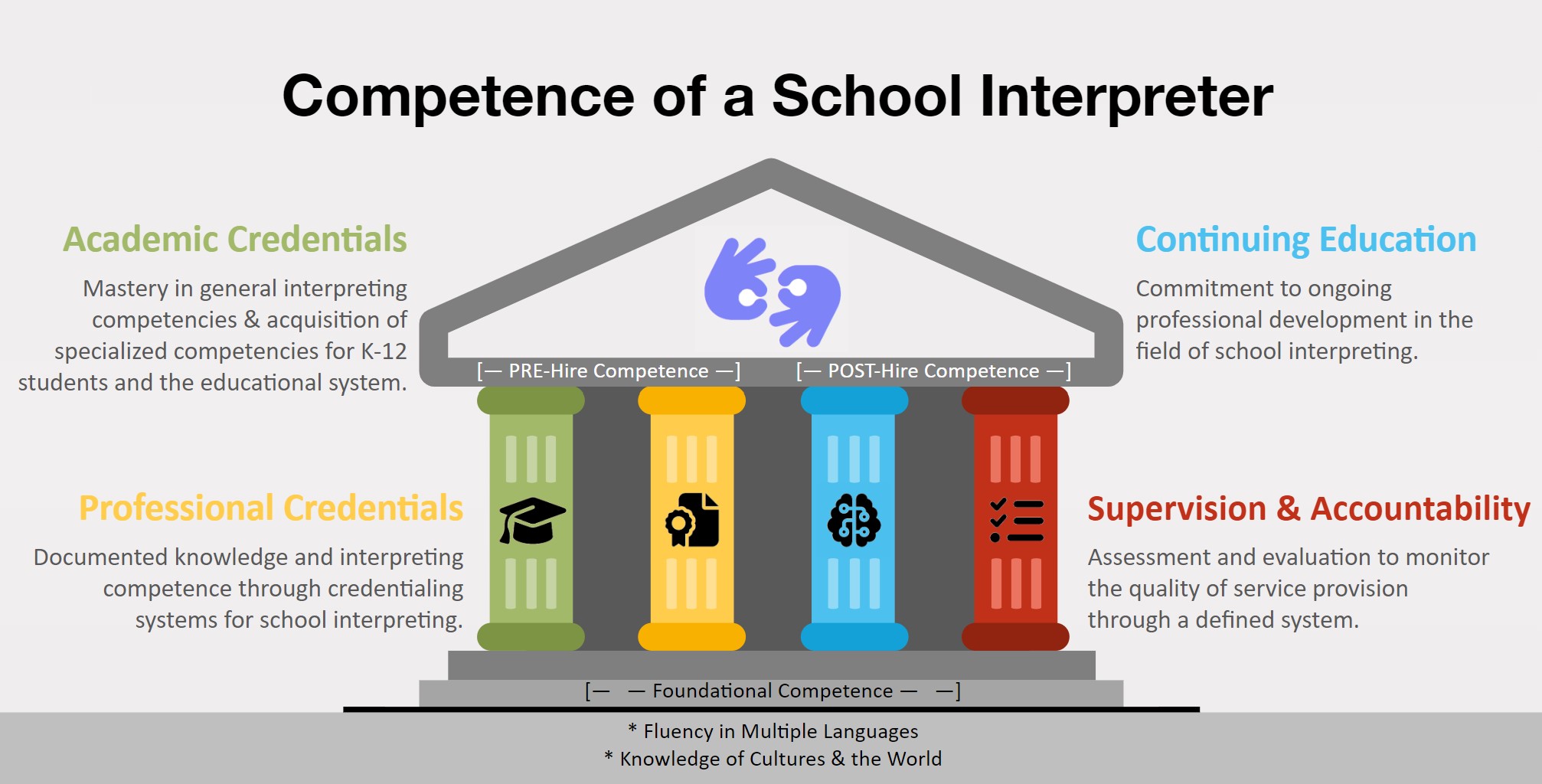PSI Project: An OSEP Grant
The Preparing School Interpreters (PSI) Project is a five-year (2021-2026), $1.25M award from the U.S. Department of Education, Office of Special Education Program (OSEP: H325K210024).
The PSI Project, under the leadership of Dr. Leilani Johnson and Dr. Emily Girardin, provides an expanded interdisciplinary concentration of 15-credits to the University of Northern Colorado’s (UNC) baccalaureate ASL-English Interpretation (ASLEI) program. The goal is to invest in the academic and practical preparation of ASL-English interpreting students, their induction into the educational system through mentoring and communities of learning, and their introduction to the profession as educational interpreters.
Twenty-seven scholarships of ~$25,000 will be given to selected upper division students in the ASL-English Interpretation BA program.
The WHY Behind the PSI Project
Educational interpreting has been recognized as a necessary service to ensure a free appropriate public education for students who are deaf and hard of hearing since the passage of the Vocational Rehabilitation Act (1973) and the Education of All Handicapped Children’s Act (1975). Time has passed and laws have changed, but the original vision of an interpreter sitting in front of one student remains unchanged. Pre-service education programs for interpreting in public schools have not yet invested in the reality that the interpreter works with everyone in the school, not just the student(s) assigned for the academic year. It is the individual and collective interactions in the school that require the knowledge and skill sets of an interpreter as a related service provider. This lens shift is critical as the field of educational interpreting continues its specialized advancement.

As described in Complexities in Educational Interpreitng: An Investigation into Patterns of Practice (Johnson et al., 2023), the 2004 reauthorization of the IDEA identified educational interpreting as one of 11 primary categories of Related Services Personnel, such as school nurses and speech pathologists, needed to support students with special needs. Nearly five decades of research and federal actions regarding interpreting in K-12 settings have resulted in a body of evidence which demonstrates that educational interpreters, like other Related Services Personnel, are professionals who should be required to have, at minimum:
Academic
Credentials
A rigorous four-year preservice program that leads to mastery of specific knowledge sets and interpreting skills related to K-12 students.
Professional
Credentials
A demonstrated and documented knowledge set and interpreting skills relevant to working with K-12 students.
Continuing
Education
A commitment to ongoing professional development in the field of educational interpreting.
Supervision & Accountability System
A defined assessment and evaluation system to monitor the quality of services provided.
Academic and Professional Credentials are required before interpreters are hired. Continuing Education as well as Supervision and Accountability System are most applicable once individuals are working interpreters, especially as employees of a school system. The following diagram depicts the four pillars of a competent school interpreter.

The Goals of the PSI Project
1) To increase the quality of educational interpreting in public schools
Interpreters provide primary access to educational opportunities for deaf and hard of hearing students. Yet, interpreters are the least qualified members of the educational team.
The 41st Annual Report to Congress on the Implementation of Individuals with Disabilities Education Act (2019) states that “more than 95% of full time employed related service providers in 8 out of the 11 categories were fully certified. The three exceptions were (1) physical therapists, (2) occupational therapists, and (3) interpreters” (OSERS, 2019, p. 76).
2) To increase the quantity of qualified educational interpreters nationwide
As of 2019, there were 6,417 educational interpreters reported under IDEA (OSERS, 2019). If the estimate of 52,500 students using interpreting services is even close to reality (National Deaf Center, 2020), then the shortage of qualified educational interpreters is shocking.

The work of interpreters in educational settings is multi-faceted and requires a wide range of competencies encompassing knowledge, attitudes, and skills (NAIE, 2019; Johnson et al., 2018; Witter-Merithew & Johnson, 2005). Interpreters are expected to be integrated members of the educational team, and capable of contributing their assessment of the student’s linguistic comprehension and communicative interactive abilities, based on regular contact with the students (Brimm, 2018; Fitzmaurice, 2018a). These expectations require the interpreter to be familiar with curricular and pedagogical approaches, child and language development, educational psychology, management strategies, implications of state/federal laws, and the roles carried out by all members of the educational team (Berge & Ytterhus, 2015; Guynes et al., 2020; Johnson et al., 2018).
The interpreting field has long recognized educational interpreting as a specialization requiring unique competencies. The field's standards and expectations for the education of interpreters dates back to 1978 and has been supported since with published research, conference presentations, and grants (Ball, 2013). Unfortunately, Department of Educations across many states provide deaf and hard-of-hearing students with educational interpreters who do not meet the necessary qualifications identified by the interpreting field and in many cases the standards set by their state education agencies.
2021-2026 PSI Project Objectives
- Review and revise existing ASLEI BA curriculum and integrate units of learning with the necessary scope and sequence to develop a new 16-credit interdisciplinary educational interpreting concentration
- Expand internship site agreements nationally to increase interdisciplinary collaborative opportunities
- Deliver campus and online upper division coursework to include interdisciplinary educational interpreting concentration to OSEP Scholars
- Design and implement an induction-mentorship experience to bridge scholars’ transition from academic studies to the educational workplace
- Support professional activities for OSEP Scholars as they enter the field of educational interpreting
Reference
Johnson, L.J., Taylor, M.M., Schick, B., Brown, S., Bolster, L., & Girardin, E.G. (2023). Complexities in educational interpreting: An investigation into patterns of practice (2nd Ed.). Interpreting Consolidated.
Grant Recognition
The contents of the PSI Project website were developed under a U.S. Department of Education, Office of Special Education Program (OSEP) personnel preparation project (H325K210024). The contents do not necessarily represent the policy of the Department of Education. You should not assume endorsement by the federal government.

The National Clearinghouse of Rehabilitation Training Materials (NCRTM) website is a central portal for accessing archived and new rehabilitation training resources offering search capabilities, a quality rating system, as well as enhanced usability and accessibility.







